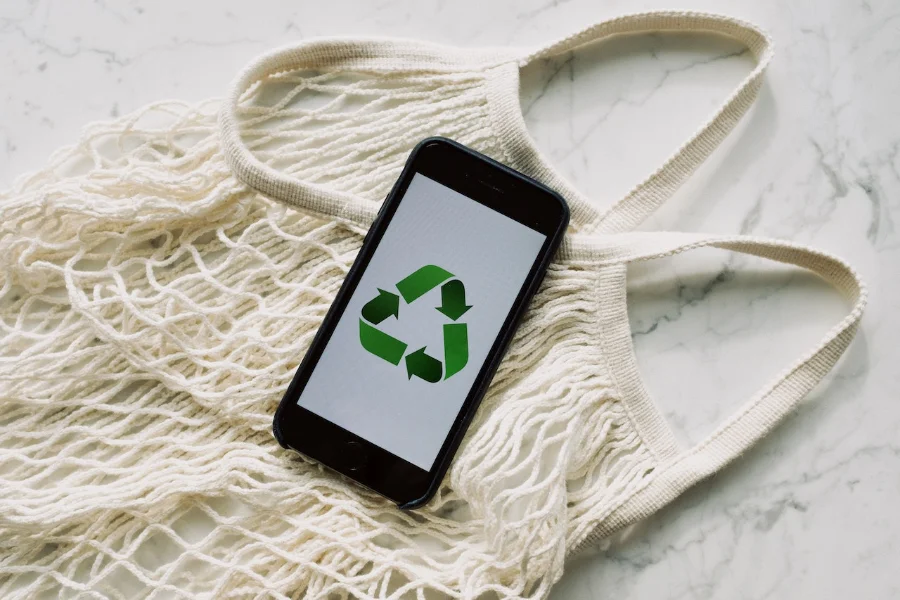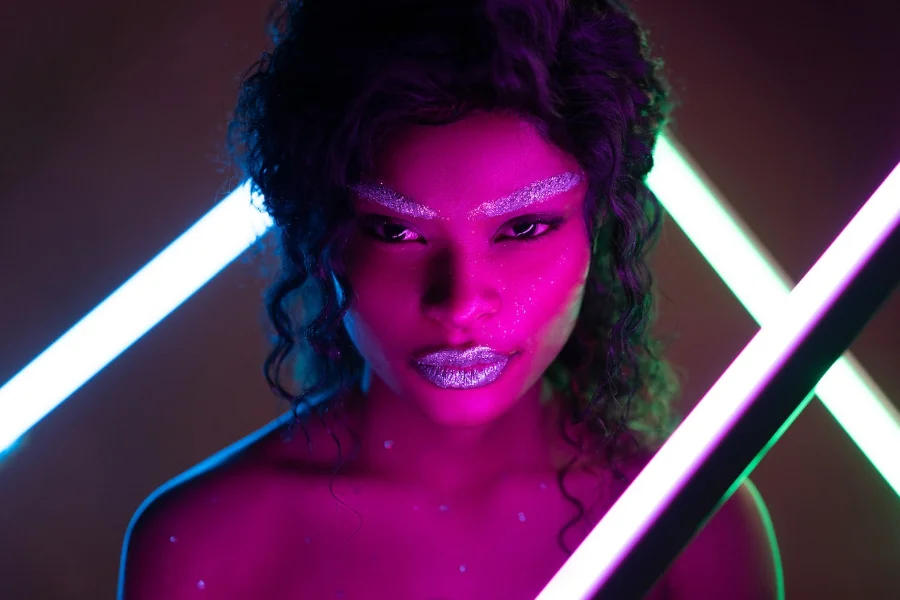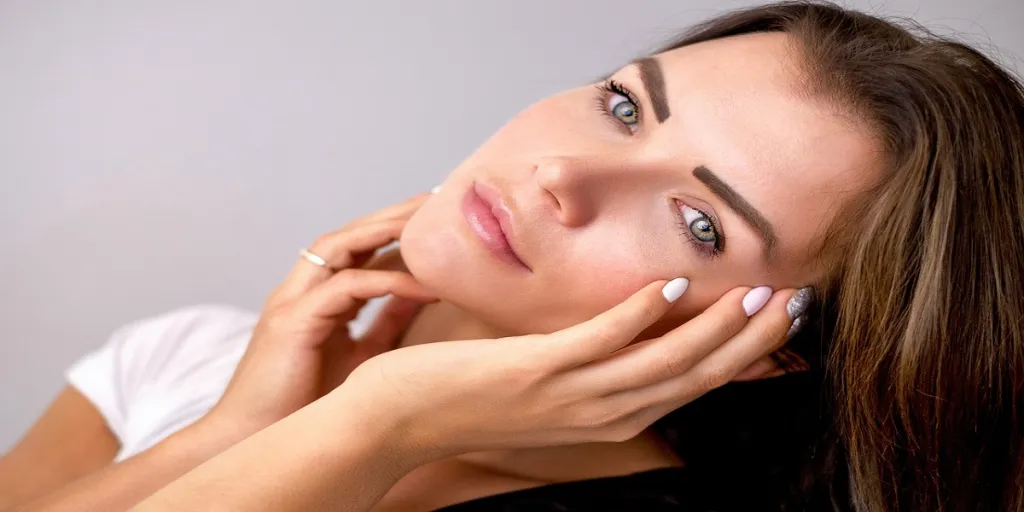The beauty market is continually changing as consumer priorities and demands evolve. Beauty brands need to keep up with the latest beauty trends and ensure their brands align with customer ideals surrounding topics like sustainability, inclusivity and flexibility. Here we will discuss the 6 big beauty ideas businesses need to pay attention to for 2025 to meet consumer demands.
Table of Contents
Overview of the global beauty market
6 need-to-know big beauty ideas for 2025
Prepare your beauty business for 2025
Overview of the global beauty market
The worldwide beauty industry generates over US $100 billion, making this one of the most profitable personal care sectors. It’s estimated that the beauty industry will grow by 3.5% yearly and projected to be worth about US $131 billion by 2026.. That means the beauty market is profitable for various business ventures.
As of 2021, North Asia made up 35 percent of the global cosmetic market, followed by North America with 26 percent. The cosmetics market can generally be broken down into five main categories: skin care, hair care, make-up, perfumes, and hygiene products.
- The global personal care market accounted for 48% of the beauty and personal care segment in 2020, with total revenue of US $224 billion. It’s predicted to reach US $295 billion by 2026.
- In 2022, the global market for perfumes and fragrances was valued at US $43.42 billion. Experts say that it will reach US $70.17 billion in 2028, growing at a compound annual growth rate (CAGR) of 8.3%.
- The global hair mask market reacher US $597.7 million in 2018, reports suggest it will reach US $886.4 million by 2026. Experts foresee the industry registering a CAGR of 5.1% from 2019 to 2026.
- The makeup industry was valued at over $300 billion in 2021, and revenue is expected to increase at a CAGR of over 5% between 2022 and 2029.
6 need-to-know big beauty ideas for 2025
As the beauty market changes, beauty brands must change their strategies to relate to and appeal to their target customer base. Here are the 6 big beauty ideas to keep in mind as we move forward in 2025:

1. Flex-abilities
As we enter an age of “emotional beauty,” brands need to put the connection between mind and skin at the center of product design. New research into the mind-skin connection suggests our thoughts, feelings, and emotions, good and bad, are often expressed through the skin.
Stress management is an important driver, with people seeking products and services that embed “emotional fitness” in their self-care routines.
The ability of any business to flex its empathy and versatility will be more critical than ever. Products and systems need to help people bend without breaking, giving them stability and options in a period of flux.
In 2025, the continuing conflation of crises will see stress continue to be a prominent feature in the daily life of many consumers. To ease this, businesses need to embrace simplicity, creating products and services that are useful, covetable, and adaptable.
Microbiome-friendly skincare will be key to strengthening and restoring the skin’s natural flora, especially for those with sensitive skin. Barrier repair skincare with microbiome-friendly certifications or ceramides, peptides and pre, pro and postbiotics can appeal to customers looking to repair damaged skin. Collagen is also another key ingredient for elasticity and hydration.
Luxury will remain important, but it will be found less in the cost of the status of an item and more in how it can make life less overwhelming. Consumers will find luxury in brands and products that do the basics beautifully.
One size will no longer fit all; brands must tailor their products to individuals. Success will hinge on a business’s ability to adapt to people’s unique and changing emotions and ensure support is accessible to all who need it.
Design for the individual prioritizing services and products to help them protect their physical and mental well-being. Care, kindness, and altruism will be metrics people judge your business on. Brands need to be obsessive about design and imbue everyday products with emotion and purpose.
2. Layered realities
The future of beauty will be creative and experimental, constantly changing, and rapidly evolving. Technology will take cosmetics beyond the limitations of conventional beauty ideals to create sensorial products.
In 2025, technology and creativity will usher in a new wave of “phygital” content creators. This augmented experience heightens the senses and more precise troubleshooting tools.
We are transitioning to a non-binary world where craft, technology, and the physical and digital are becoming entwined rather than treated as distinct entities. Developments in AI and rapid and virtual prototyping will open up new forms of creativity, more efficient paths to production, and targeted products and services.
We will be embracing the micro over the macro, where niche interests and shared experiences are more binding than siloed signifiers of identity such as gender or geographic location.
Stronger collaboration with tech will take beauty where it’s never been before. Digital duality will add a sensory layer to everyday products and services, inspiring new beauty identities.

3. Resource-ready
Businesses will use resource scarcity as an opportunity to drive more sustainable consumption and production. The needs of nature will be placed at the center of all decision-making. A reliance on plant-based ingredients and large amounts of land, water, and energy will come under increased scrutiny.
Businesses must switch to regenerative systems that maximize all the planet’s resources, past and present, and accelerate alternative sourcing streams that are affordable and more sustainable.
In 2025, forward-thinking businesses will harness natural and synthetic resources, using lab-grown processes to create alternative material streams or revive endangered ones. Brands must work hard to educate consumers about the benefits of these affordable and sustainable alternatives to unlock biotechnology’s full potential.
4. Urgent optimism
Around the world, people are losing trust in political processes and government, taking matters into their own hands to force change. The lack of a single definition of “clean beauty” or industry certifications has led to a wave of unsubstantiated claims, causing consumers and the beauty industry to question its validity.
Beauty consumers will question everything, using positive cynicism to guide choice. In 2025, it will be imperative for brands to lead the way, taking meaningful action to make the planet fairer for all. Brands also need to provide full traceability and lean into difficult conversations, addressing issues such as claim-washing and the damaging effects of beauty culture.
We are in a period of profound change, and its impact is becoming more apparent each year. Climate calamities, economic inequalities, forced migrations, and extreme politics are creating microcosms of discord around the globe. People have grown impatient for tangible solutions.
Consumers will expect brands to challenge injustices and amplify the voices of marginalized people, both within and outside the company. Collaborations need to be formed with more consideration, driven not by short-term clout or headlines, but by shared long-term values and missions. Now is the time to get clear about your standards, set them high, and build yourself up to be a driver of change, not a reactor to it.
5. Preservation mode
As our planet reaches the end of abundance, we will need to replace our faith in endless growth with something more sustainable — preservation. Uncertainty over seasonal patterns and crop harvest will see brands and manufacturers enter preservation mode.
Developing alternative approaches that protect natural resources and products that empower consumers to do their part will play a significant role in preservation.
Around the world, crops are dying, water supplies are drying up, and our access to fuel is threatened. Expect to see local supply chains strengthened and more businesses embrace waste, regenerative crops and a redistribution of resources to safeguard access to ingredients and materials.
Wasteful industry practices will be unacceptable, and many expect brands to make recycling, reselling or repairing more accessible. Avery Dennison found more than 10% of beauty products, around US $4.8 billion worth, are discarded globally due to excess inventory and overproduction.
A further 4% of the stock is wasted due to perishing or damage. Upcycling waste, working with neighboring industries, and switching to solid and powder formats that have longer shelf lives and are easy to transport will help combat these issues.
Businesses and governments will look to lessen their impact on Earth by exploring space as a new source of materials and research, whether mining metals from asteroids or stress-testing products in microgravity.
This will open up issues about space exploration’s cost, sustainability, and ethics. Still, it will also see space emerge as a broader theme in creative innovations as artists and designers look to the stars and imagine worlds that are bigger, brighter, and full of potential — if co-managed ethically.

6. Strategic imagination
We are moving from the Information Age, where knowledge is the major driver of growth, to the Imagination Age, where creativity will be the currency that generates values and sets business strategies.
A new dawn of creativity is here, and the implausible will be made a reality. AI tools are making it easier for more people to create otherworldly images or realistic avatars. The metaverse empowers people to build immersive worlds; and social media is morphing into recommendation media as young generations use it more for research and entertainment.
Multi-sensory design using AI tools and neurosciences will unlock new product possibilities and applications and broaden storytelling. Every aspect of a product has a sensory impact and value, from the sound a spritz of perfume makes to a satisfying tube squeeze and should be placed on par with formulation and performance in the design process.
More businesses will be exploring creativity with a purpose in a world weighed down by considerable problems. They are creating better businesses that address broader needs, a form of self-care or an outlet for community healing. These spaces will open up new issues around creative consent, ethics, and authenticity. Still, they will also create imperatives for brands to position themselves as entertainers and enablers of imagination.
Brands need to take the lead by creating more inclusive products, experiences, and business strategies where people can come together with exuberance to imagine possibilities and daring solutions, underpinned by the mantra that if you can dream it, you can build it.
Prepare your beauty business for 2025
As the world changes, the beauty industry needs to change with it. Empathy can be a guiding business principle; businesses can offer products and services that go the extra mile and reflect the pressure that customers are under. In tough times, kindness cuts through.
Sustainability is imperative for all businesses, from executive directors representing the environment in the boardroom to eco-expert NPDs and buys. More sustainable design needs to be embedded from the top down to not only appeal to the conscious consumer, but to have a positive impact on the environment and preserve natural resources.
When considering products, adopt a vuja de mindset and design for the individual. Vuja de refers to seeing familiar things in a fresh light. Businesses should use new technology to see products in fresh ways to help capture new audiences and should take a personal approach to customization and investigate how to offer more options.




